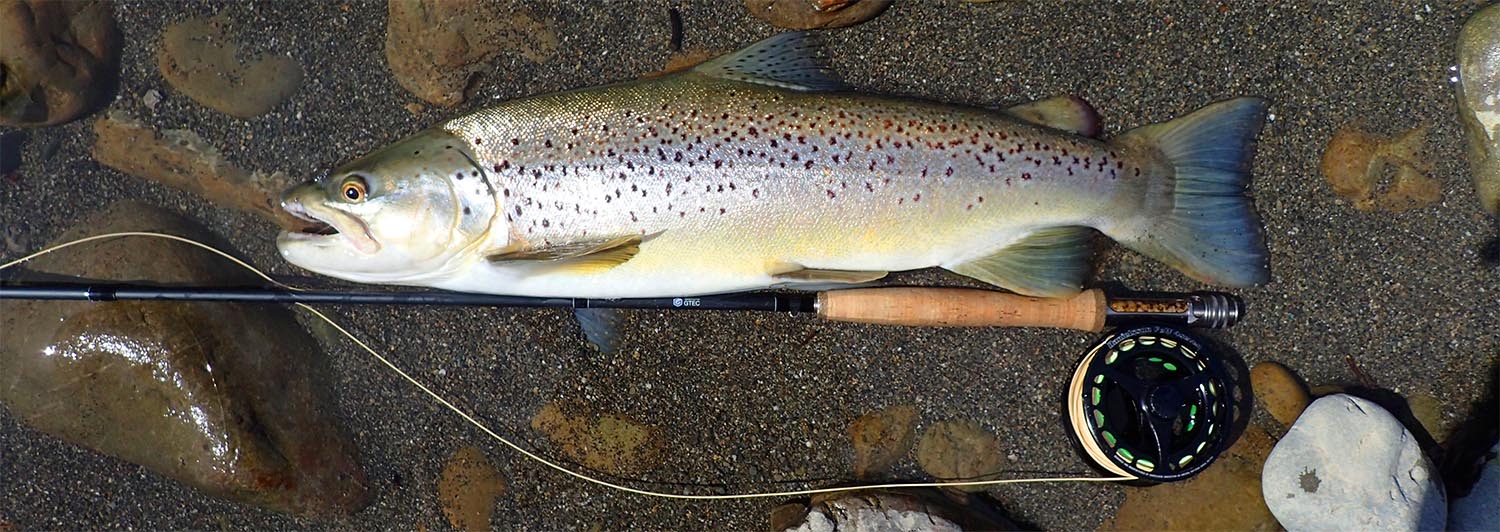I often come across large wily trout in fairly shallow water on my local rivers, so was looking for a line I could use on a 9 ft 5wt or 10 ft 4wt euro nymphing rod to make accurate delicate casts that would not spook these fish.
If you’ve read my other fly line reviews, you’ll know I really like the Scientific Anglers Amplitude fly lines, especially the textured versions which are memory free, supple, very durable and shoot like crazy.
During 2024 I extensively tested SA textured Amplitude 5wt Double Taper and Trout fly lines on a 9 ft Douglas Sky G 5wt and a 10 ft Sky G 4 wt. I also fished the DT on a 9.5 ft 5wt Sage X, a rod I often start the day with in Spring because of its ability to cast jig streamers on mono rigs.
Both the Trout and DT are true to weight - being that the first 30 ft weighs 140 grains.
Over-lining Euro nymphing rods by one line size, works well for New Zealand sight fishing situations which is why I use a 5wt line on my 4wt rod. Apart from loading the rod better in close, a 5 wt line is more able to cast the long leaders and tungsten bead nymph rigs often use in New Zealand.
Out of the box
A Double Taper (DT) fly line consists of a level belly with an identical taper at each end, being reversible. The end tapers on the SA Amplitude double taper are 6 ft long, and one half of the line is a mint green colour and the other is buckskin.
The SA Trout has a 68 ft head consisting of a 13 ft concave compound front taper, followed by a compound reverse taper comprising three separate tapers of decreasing steepness and length. There are two colour options,and the one I chose has a willow front taper, a mint green belly and a moss green running line.
When I tested these two lines in the paddock, both casted incredibly well on the presentation biased rods,and 70ft casts were easy. I could carry more line in the air with these two rods than with lines that are a half size heavier, e.g. SA MPX and Infinity.
On the water
SA Trout
On the water, the SA Trout, with a 13 ft front taper, had better presentation and handled more payload than I anticipated for a fly line designed for delivering small dry flies at distance.
I could easily cast two 2.5 mm tungsten bead nymphs and an indicator on a 14 ft leader into a moderate downstream breeze - all I need for most sight fishing situations. Two nymphs below a bushy dry fly on a long leader was pushing the capability of this line.
When casting heavier nymph rigs I needed to have around 20 ft of fly line out of the rod tip to turn over heavier rigs, meaning the SA Trout didn’t load well in close. This was less of an issue with small dry flies and light nymphs.
Having said that, because it has a reverse taper the SA Trout can handle more load, more wind and it loads quicker than presentation fly lines with very long front tapers, e.g. triangle or delta taper profiles.
Even though the SA Trout loads quicker than other presentation lines, the long reverse taper means it does not overload the rod when arialising more line for making long shots.
As the SA Trout has a long head largely consisted of a long gentle rear taper it mends well for a weight forward fly line, although not as well as the DT.
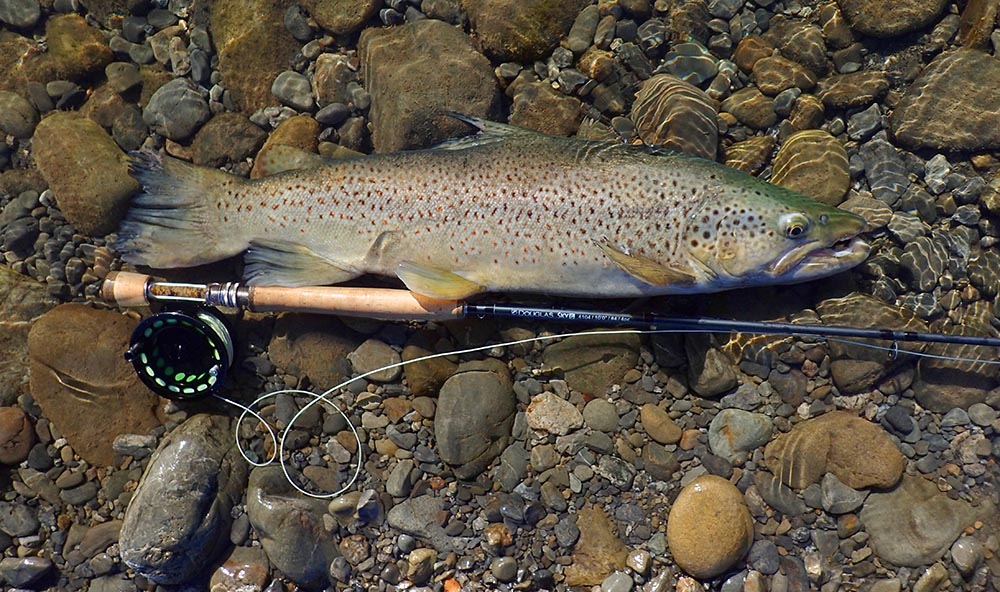
Sight fishing with the SA Trout on the 10 ft 4wt Sky G -
two 2.5 mm tungsten bead nymphs beneath an indicator on a 14 ft leader
two 2.5 mm tungsten bead nymphs beneath an indicator on a 14 ft leader
SA Double Taper
The double taper (DT), with 6 ft front taper, handles slightly larger flies, including bushy dries on a dry/dropper rig, it also loads better in close and is better at mending and roll/spey casting.
The DT did not cast as far as the Trout, as it has a level head and no skinny shooting line. Aerialising more of the head of the DT tended to overload the medium action rods.
The DT was very accurate at close to medium distances, and since there is linear relationship between rod load and the amount of line beyond the rod tip, due to the level belly/head, it is easier to judge distance than with lines with long front tapers or reverse tapers. This is a big advantage when casting to sighted fish that only allow you one or two shots.
The DT had no problems with a #12 bushy dry fly and two 2.5mm tungsten bead nymphs below it, and distances to 60 ft with a 16 ft leader. Casts were very smooth and easy to control to produce a good presentation.
In addition to casting more weight, the DT was also better at turning over long (15 ft plus) leaders than the Trout, especially important for New Zealand sight fishing. As you can’t drop the tungsten nymphs too close to the fish without spooking them, and you also dont want to cast the fly line over them, a long leader is mandatory.
With the longer and more powerful 9.5 ft Sage X 5wt, I could cast a 20 ft leader with a duo of 3.0mm and 2.5mm tungsten bead nymphs beneath a yarn indicator.
One of the advantages of the DT I particularly enjoy is when I’m indicator nymphing I dont need to retrieve any line, all I need is a quick double Spey - off either my left or right shoulder, depending on flow direction - and I can shoot out another 10 feet. I can also use the double spey to aerialise the line and make a single false cast to cover even more distance.
The Spey Casting ability of the DT makes it a great line for soft hackles and fishing spots with little backcasting room.
The DT mends exceptionally well, both in the air and on the water, because there is no rear taper.
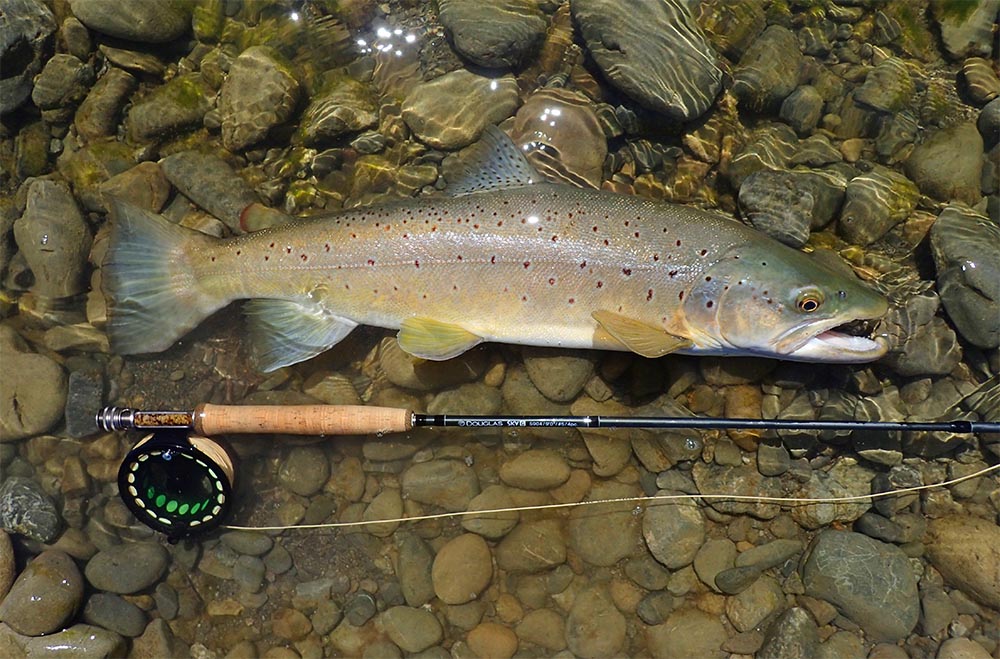
Sight fishing with the SA Double Taper on the 9 ft 5wt Sky G -
two 2.5mm tungsten bead nymphs beneath a #12 bushy dry fly on a 17 ft leader
two 2.5mm tungsten bead nymphs beneath a #12 bushy dry fly on a 17 ft leader
Conclusion
A Scientific Anglers Amplitude 5wt DT is now my favourite line on the 9 ft Sky G 5wt, 9.5 ft Sage X 5wt and the 10 ft Sky G 4wt, for nymphing small to medium sized lowland rivers and for sight fishing outside of the cicada season in New Zealand.
When I need to cast #8-#6 bushy dry flies on long leaders the MPX is hard to beat, see article link below.
The SA DT is very accurate, has decent presentation, can cast long leaders, deal with moderate wind and is great for mending and Spey Casting.
The Trout is my first choice for fishing mayfly hatches and lightly weighted nymphs, including emergers, as well as willow grubs and passion vine hoppers. Its presentation is excellent and, in my opinion, deals with more load and more wind than other presentation lines I’ve used/tried.
While the Trout can be used for sight fishing with medium weighted nymphs, it is not as versatile as the DT for this purpose.
Conversely the DT is a fine line for casting small dry flies and emergers during a hatch, but it will not match the distance or presentation of the Trout.
In short, the SA Amplitude Trout and Double Taper are both fantastic lines and the right one for you will depend on the fishing situation you need it for.

Indicator nymphing with the SA Trout on the 9 ft 5wt Sky G
One 2.5 mm and one 2 mm tungsten bead nymph below a small polyarn indicator on a 15 ft leader
One 2.5 mm and one 2 mm tungsten bead nymph below a small polyarn indicator on a 15 ft leader
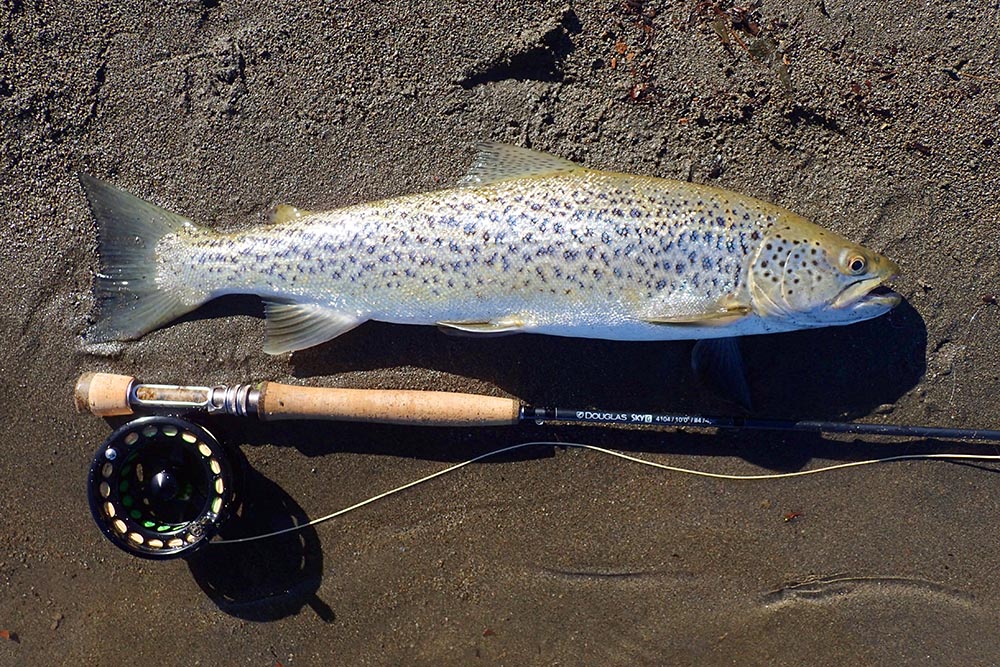
Indicator nymphing with the SA Double taper on the 10 ft 4wt Sky G
Two 2.5 mm tungsten bead nymphs below a small polyarn indicator on a 15 ft leader
Two 2.5 mm tungsten bead nymphs below a small polyarn indicator on a 15 ft leader
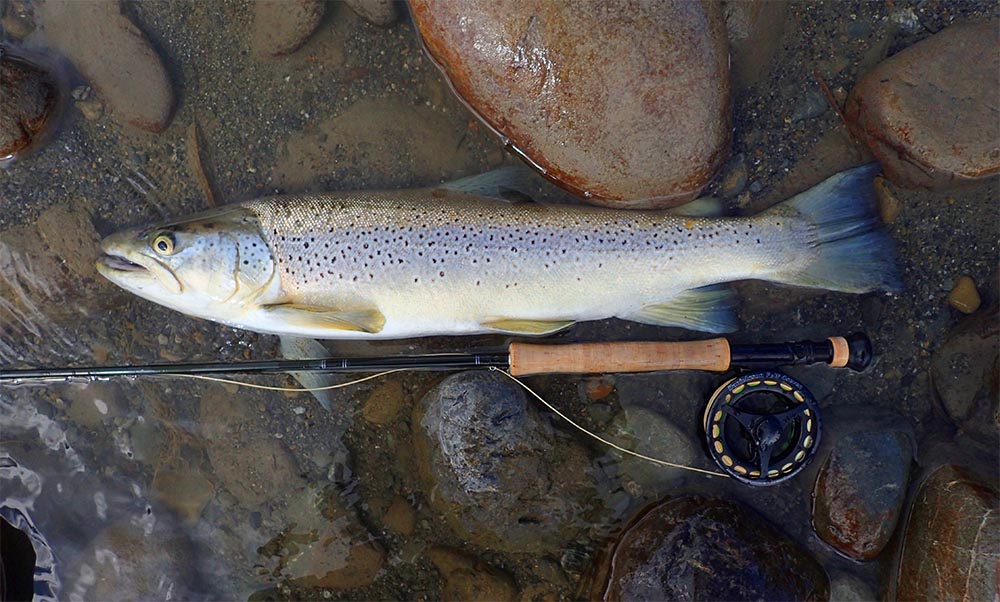
SA Double Taper was also a great match for my 9.5 ft 5wt Sage X
For more information, have a look at :
https://silverwaterfly.fishing/trout-&-fly-fishing/choosing-the-best-floating-flyline-for-trout.html
See other reviews :
